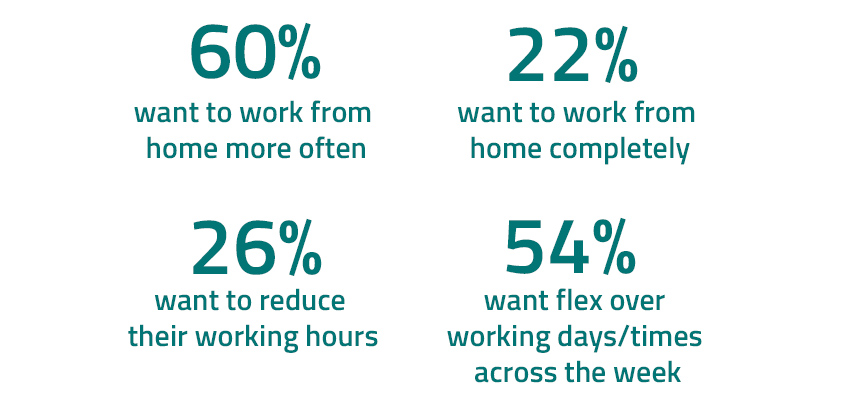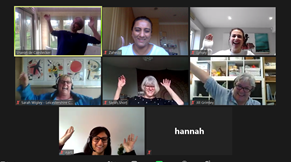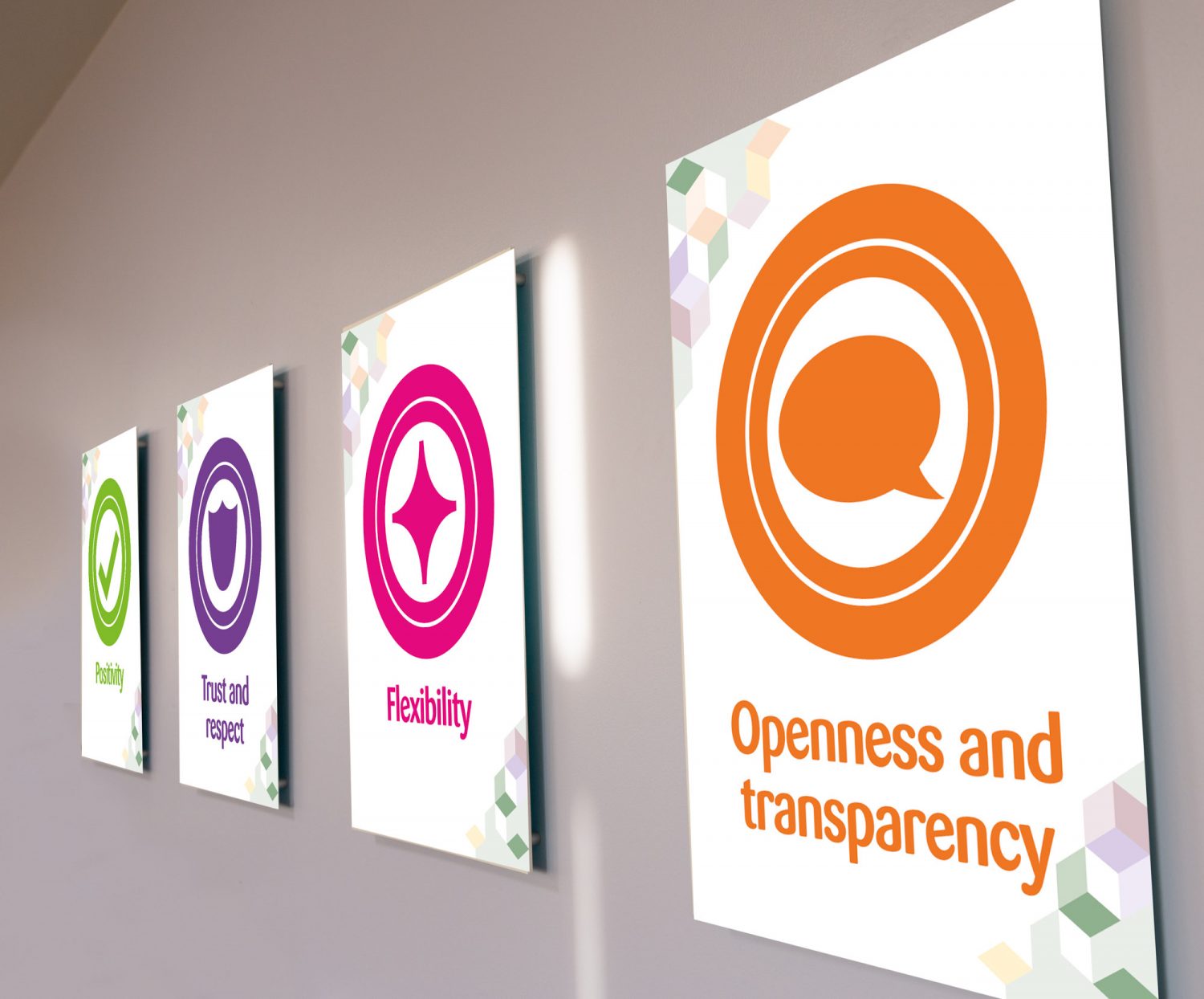

Successful management of remote and hybrid teams requires a new set of skills – and they won’t just appear by magic. Leaders and HR need to invest in training to bring people up to speed, or risk the consequences.
As 2020 crawls to a close, one thing is certain; the workplace will never be the same again. It’s pretty clear that a degree of remote working is here to stay; a survey by the IOD suggested that 74% of firms are planning to maintain the increase in home working. And at the time of writing, the Prime Minister has told all workers in England to work from home if possible until April 2021.
Clearly, there are many upsides to remote working; from the time gained by skipping the commute and the related positive impact to mental health, to a general perception that it makes it easier to balance work and life. And the growing acceptability of hybrid working set-ups, where you work in the best place for the job in hand and the needs of your team, is a real step forward.
But it’s also important to recognise that the remote working we’re seeing right now isn’t normal; it’s universal, and enforced, without reference to whether it’s the best way to tackle that day’s or week’s workload. So it’s not surprising that, in our conversations with businesses, we’re hearing lots of examples of how it isn’t working as it should.
This doesn’t mean that home and hybrid working arrangements should be phased out once the pandemic is over. Employees want to keep them, and they can be a useful part of any organisation’s flexible toolkit. But simply replicating office-based practices isn’t enough. As with any flexible role, these arrangements need to be designed properly, and managers need to be skilled up to support the people who are using them.

The concept of Zoom fatigue – the exhaustion felt by people as a result of online meeting overload – was much discussed at the beginning of the pandemic. Some employees, particularly younger ones and those living alone, have wrestled with a lack of proper workspace, with some even reporting feeling judged by their home environments. The blurring of boundaries is also a recognised problem. And smart decision-making and creativity have both been noted as being negatively affected when whole teams work permanently from home.
Additionally, there is a growing sense that, without careful oversight, the move to a hybrid set-up, with some in the office and others at home, may lead to women and ethnic minorities being excluded from key decisions and limiting the diversity of opinions which are heard. Or that the extroverts in a team will choose to go in, and the introverts to stay at home, affecting their visibility and progression path, and encouraging groupthink.
These are tough issues to work around – but if we just roll over and accept them as the price we pay for more flex, we risk rowing back on all the progress that’s been made. Instead, we need to tackle them – and the best way to do so is by making sure line managers and other leaders are properly skilled up.
Well-trained, properly skilled managers know that they need to trust their remote employees, rather than force them to stay logged in to Zoom all day so they can keep an eye on them. They understand that having an 8.30 meeting every day to check that everyone is working can be counterproductive. They appreciate that, when physical interaction isn’t possible, other ways of connecting teams have to be found. And they realise that, in an era of job uncertainty, employees need to be encouraged to switch off, not left to put in ever longer hours for fear of being let go.
To succeed, managers need to know how to design flexible roles – whether part-time, remote, or a combination of the two. They need to understand how to manage flexible employees, and how to ensure that hybrid-working teams are still able to work productively together. But these aren’t skills that people can just pick up. They need to be taught; and that’s where we come in.
Training managers to build and develop successful flexible teams has long been a core part of our work here at Timewise. And now, from our work with clients and other organisations during the pandemic, we have gained a unique set of insights that are specifically relevant to building these skills in the current circumstances.
We can support employers in a range of ways; from workshops and training sessions to participation in our new Flex Positive Programme. So if you, like us, believe that this is a critical time for developing the leadership skills that will make a success of flexible and hybrid working, feel free to get in touch to see how we can help.
Published December 2020

The work we do here at Timewise can be summed up in one short sentence: Making good jobs flexible, and making flexible jobs good.
But over the last five months, while we’ve been delivering our free Covid-19 support programme to hundreds of organisations and employees, we have noticed a worrying trend that affects both parts of this story.
Firstly, as many organisations fight to stay in business, and hang on to as many of their employees as they can, there’s a risk that work will become more flexible but less ‘good’. Flexible work done badly is counterproductive; instead of helping employees reduce or have more control over their time, it can lead to extreme working hours and blurred boundaries.
This is bad news for everyone, but particularly affects women and people with caring or other responsibilities. It has been exacerbated during the pandemic by complications around childcare, with many being forced to quit their jobs. And for those who are able to stay and renegotiate their hours, there’s an increased risk of getting trapped in roles with reduced opportunities for progression.

The Scottish government was serious about improving access to fair flexible working long before the Covid-19 pandemic hit. Recognising the role that flex can play in tackling inequality, and keen to help employers attract and keep talented people, they commissioned a Flexible Jobs Index for Scotland in 2017, and subsequently asked us to explore how to improve access to flexible work.
And now, as Scottish organisations look to recalibrate their workplaces in response to the pandemic, the government is stepping up their support – and has asked us to work with them to do so. The result is our Fair Flexible Work programme, which launches in Scotland this month.
It’s now widely agreed that flexible working benefits employers as well as employees. There’s a strong social case for it, as a way of opening up the jobs market for vulnerable groups, including parents, carers and those with mental and physical health issues. And the business case, including the pivotal role flex plays in attracting and retaining a diverse talent pool, and closing the gender pay gap, is no longer in doubt.
However, despite the benefits, there are still too few quality flexible jobs available; the 2017 Flexible Jobs Index for Scotland noted that just 11.9% of vacancies paying more than £20,000 FTE referenced part-time or flexible working. With 87% of the UK’s workforce either having or wanting flexibility in their next job, there’s a clear gap here, which employers who want to recruit the best people need to close.
Within the context of the Covid-19 pandemic, improving access to flexible working is all the more critical. On the plus side, the crisis has ripped up the rulebook on what ‘normal’ work looks like, and opened up opportunities for change. Leaders and managers have learned that they can trust their employees to work from home without damaging productivity. 40% of medium to large employers have said they will permanently increase remote working options, and 13 million people plan to ask for permanent flexible working arrangements going forward.
But as well as these opportunities, the pandemic has created some serious risks, for employers and for employees. The impact on the economy and the rise in unemployment are creating huge challenges; between May and July, Scotland’s unemployment rate rose to 4.6%, a higher rate than that of the UK as a whole. And while the increased acceptance of flexible working is great for those who can take advantage of it, it’s just not possible in some sectors.
Frontline roles, such as those of the NHS staff and retail employees who were so appreciated during the crisis, cannot easily be made flexible. So if we don’t take action, we will end up with a two-tier system in which only those who work in an office-based environment can access the benefits of flex. And the knock-on effect of this will be to increase workplace inequality, and deny flexibility to some of the people who need it most.
For all of these reasons, our new Fair Flexible Work programme is happening at the perfect time. A three-stage, eight-month programme, it will provide employers in Scotland with the knowledge, insights and tools they need to take advantage of the opportunities that flexible working delivers, and stops the risks becoming realities.
The first stage of the programme will take place in October, and will see us providing a series of webinars, guidance and toolkits for hundreds of employers across Scotland. Through these platforms, we will share our insights and experience on how to adapt to the crisis, and offer practical support with creating and delivering sustainable flexible roles.
We will also be working with a range of Scottish industry bodies, including the CIPD, the CBI , Scottish Enterprise and Glasgow Chamber of Commerce, to create a network of Fair Flexible Work Change Agents, so they can better support their employer members to embrace new ways of working. This will include training on the job design, culture change and team management skills that support flexible workers and create flexible workplaces.
And finally, in the spring of 2021, we will publish a new Flexible Jobs Index for Scotland. This will assess the proportion of flexibly advertised roles across different wage brackets and sectors, and will also use pre- and post-pandemic data to see whether Covid-19 has shifted the dial on flexible recruitment.
There’s no question that this is a large-scale programme of work, and it’s one which we will relish, not least because the outcome is so worthwhile. It’s a once-in-a-lifetime opportunity to reshape working practices across the whole of Scotland, to help employees have fair access to flexible work and to help organisations skill up and take action on flex that will make them employers of choice. We can’t wait to get started.
Published October 2020
Many jobseekers have had to put their jobsearch on hold during lockdown. The jobs market has declined significantly, as employers have had to batten down the hatches and adapt to new ways of working, deal with furloughs and redundancies, and in many cases fight for survival.
91% of jobseekers in our survey are understandably nervous about the future jobs market. And, like everyone else, many are dealing with increased pressures at home. So the survey’s first significant heads-up for employers is this: while just over half of those in work have perhaps decided it’s safer to stay put in their current jobs, a sizeable minority (45%) will look to move jobs as soon as they can.

Any employers thinking that retention will not be an issue for a few months, may need to think again. And when the need to recruit arises, they are likely to find that the ground has shifted.
People have had four months of experiencing that jobs can be done from home, and that a 9 to 5 routine isn’t necessary. And fears of the virus are still understandably strong – 71% worry they may catch it on their commute; 76% worry about catching it at their workplace.
So it’s no surprise that when people apply for jobs, they will be looking for flexible working.

This isn’t just a case of people wanting to continue working from home. Our survey found significant levels of interest in all forms of flexible working. The proportion wanting to reduce their hours (26%) is particularly interesting – possibly suggesting that people’s values have changed as a result of covid-19, as they’ve had time and reason to reassess ‘what really matters in life’.

Our recommendation to employers is not to fear the increased demand for flexibility, but to embrace it. The last four months have proved just how productive flexible working can be, and has swept away many of the previous objections and perceived barriers. Separated physically from their colleagues, line managers will have been learning how to judge performance based on outcomes, not on the number of hours spent visibly at a desk. So now is the time to grasp the opportunity, hold on to all the positives of remote working and variable hours, and embed sustainable flexible practices into our workplaces.
Employers’ reputations are at stake here. During lockdown more than ever before, organisations have been watched by their staff. People are observing how well business leaders rise to the challenge of the pandemic and deal fairly with their people, respecting their needs for safety and for the space to take care of the non-working parts of their lives.
The good news is that most employers do seem to have been sympathetic to their staff during lockdown, and supportive of the extra stresses that the virus has brought. The vast majority of the people we surveyed said their employers were either ‘very supportive’ or ‘quite supportive’ across several different measures.

How well organisations continue to meet the needs and expectations of their staff will be vital to employer brand. A consultative, supportive approach will earn the most respect – it will be important to check in with people to ask how they are feeling, post-lockdown, and adopt inclusive working practices going forwards.

Research published July 2020
Methodology: The survey was promoted to the Timewise Jobs database in June 2020. 1,000 jobseekers took part.
By Emma Stewart, Co-Founder,Timewise
There is a lot of research coming through about how lockdown is affecting working women. And unfortunately, it all tends to point one way.
According to the IFS, mothers are 47% more likely to have permanently lost their jobs or quit, and 14% more likely to have been furloughed, than fathers. And those who are still working are more likely to be interrupted than their male partners; almost half of mothers’ hours spent doing paid work are split between that and activities such as childcare, compared to under one third of fathers’.

It’s becoming clear that, when the workplace gets back to ‘normal’, it won’t look like it did before. The crisis has challenged the concept of the office being the best place to work. And employees in all kinds of roles, whether office-based, frontline or elsewhere, have seen for themselves the benefits of working flexibly or reducing their hours.
The knock-on effect of this is an increase in demand for permanent flexibility. A recent survey suggested that 13 million people plan to request changes to their long-term pattern once the crisis has subsided.
Is this something employers should fear? On the contrary, we believe this is a catalyst that will change workplaces for the better. And so instead of worrying about opening the floodgates, leaders and managers should see this as an opportunity to be proactive, and encourage their staff to explore their options in a way that will work for the business.
It’s for this reason that we’ve created a free toolkit for employees, Beyond lockdown: How to negotiate flexible working, for the long-term . It’s part of our free Covid-19 support programme, and will help individuals understand the different flexible working options, explore which best match their role, and think through the impact on their team and the wider organisation.
Sharing this toolkit with your employees will help them consider the issues and potential solutions before they bring their request to their managers, which should lead to really positive conversations. It will also encourage them to ask for a flexible working pattern that benefits the business as well as themselves.
And critically, being proactive about offering this support will demonstrate that you’re a forward-looking, proactive employer who puts staff wellbeing at the heart of your strategy. In the post-Covid landscape, where organisations may be judged on their response to the crisis, that’s a powerful position to be in.
Our free Covid-19 programme is supported by Barclays LifeSkills and Trust for London.
Published June 2021

There’s no question that Covid-19 has ripped up the rulebook on what normal work looks like. Whole organisations and sectors, including those that have previously been considered ‘un-flexable’, are now discovering what’s possible.
And while remote working is just one aspect of flexible working, what we’re seeing is a huge mindset change. 13 million people plan to ask for permanent flexible working arrangements once lockdown is lifted. Twitter have announced that their staff can work from home ‘forever’ if they wish. 40% of medium to large employers have suggested they will permanently increase remote working options.
A once in a lifetime opportunity to transform the way we work
It is becoming clear that forward looking organisations, who want to be seen as employers of choice, can’t afford not to develop their flexible working offer. But there’s a big difference between offering remote working at speed, and delivering sustainable flexible working.
Most organisations are still in the first phase, managing the remote working experiment as best they can. But it’s now time for leaders to start thinking about the second phase, to use what they have learned to develop truly flexible workplaces. And we are here to help bridge that gap.
From crisis to opportunity: our free Covid-19 support programme
At Timewise, developing sustainable flexible working solutions is what we do. We do it for organisations and sectors of all shapes and sizes, and we do it exceptionally well. So as Covid-19 took hold, we rolled up our sleeves and worked out a plan to help employers and their staff turn this crisis into an opportunity.
The result is From crisis to opportunity: redesigning the workplace, a free Covid-19 support programme for organisations and their staff. The programme includes a series of webinars for key organisations and sectors, and practical support for groups such as line managers, with more to come. You can find out more about the programme on our bespoke Covid-19 support page.
An important part of the programme, which is supported by Barclays LifeSkillls and Trust for London, will be capturing the learnings from this time and sharing them for the benefit of all. And that sits at the heart of how we work.
Why this matters – now more than ever
As a social business, all our work is underpinned by our central mission: to create fairer workplaces in which individuals can get the flexibility they need without compromising their value in the jobs market. We believe that getting this much-discussed ‘new normal’ right is will only happen if flex and fairness are built in. Here’s what we, as a society, need to do if we’re to make this happen:
If we don’t act carefully, some key groups, such as those who are juggling work and care, will miss out. Research from the IFS has shown that working mothers are bearing the brunt of the caring and homeschooling responsibilities, and the gap between mothers’ and fathers’ work patterns has grown since the crisis began. There’s a real risk that more working mothers may drop out of the workplace unless properly designed flexible roles (and not just juggling from home) are offered to all.
The Covid-19 crisis has rightly seen a growing appreciation of frontline workers, from NHS staff to retail employees. It’s important as we go forward with flex to remember that not everyone works in an office, and those who don’t are just as entitled to, and in need of, flexible working.
At Timewise, we specialise in tackling sectors which are hard to make flexible, with recent projects focusing on construction, nursing and teaching. This kind of work needs to continue more widely, to ensure that those who have protected us during Covid-19 are protected in return with fair working practices.
There have been some great examples of human leadership during the crisis, such as CEOs talking to staff about how lockdown has affected their mental health, leaders showing by example that it’s OK if your kids come on the Zoom call and managers empowering their teams to work at times that suit them. This open, positive attitude needs to continue, with bosses creating and delivering cultures in which flexible working is properly implemented, supported and celebrated.
Dishing out a laptop and a Zoom account is a short-term fix, not a long-term strategy. Designing truly flexible roles involves looking at where, when and how much work needs to be done, and it isn’t something you just know; line managers need to be taught how to do it. Our Covid-19 support programme includes a free introductory line manager’s toolkit; we also offer more bespoke training as part of our consultancy package.
Finally, creating flexible jobs isn’t enough. We also need to make sure they are advertised as such when companies start rehiring post-crisis, particularly as many of the people who have lost their jobs will need flexibility in any role they return to. It’s not just good for employees either; a recent study showed that employers who advertised their jobs as flexible saw a 30% uplift in applications.
We’ll be tracking the jobs market through our annual Flexible Jobs Index, with a particular focus on the post-Covid-19 landscape and the impact of this global remote working experiment.
If we come together and make all this happen, we really will have turned the crisis into an opportunity; for fairer workplaces, for more equal teams and households, for better mental and physical health. It’s going to take a lot of work – and will need industry and government support and funding – but it’s a once-in-a-lifetime opportunity that’s here for the taking.
Published June 2020
Leicestershire County Council is an organisation serving the residents of Leicestershire. The council employs over 6,500 employees and proactively offers a range of part-time and flexible arrangements. However, in certain roles that provide face to face services, flexible working may be more limited.

Tina Goswami is an Organisational Development Advisor for Leicestershire County Council. Using psychological and behavioural insights, Tina delivers various OD projects, coaching and team interventions to improve the organisational culture, productivity and wellbeing.
Life before lockdown
In 2014, Leicestershire County Council began their journey towards introducing and integrating smarter working across the organisation. This work, which Tina was involved in, meant the council offered a variety of flexible arrangements to suit employee needs before Covid-19. As a forward-thinking employer, Leicestershire County Council’s employees could work part-time, compressed and term time hours with flexibility in start and finish times as well as work from home.
The greatest barrier to more flexibility was service needs. The logistical constraints of some roles, such as road workers and librarians, meant working hours and location were not as flexible. However, there was more flexibility available for office-based staff who could work from home either occasionally or on a regular basis.
In 2019, a Workplace Project commenced to further embed smarter working practices looking at technological, workspace and people aspects, this work was being rolled out as the pandemic hit.
Reacting to the crisis
With good flexible working practices already in place, Leicestershire County Council acted quickly, shifting most staff to remote working. The organisation introduced a £200 home-working allowance for all staff to help create a comfortable working environment.
Leicestershire County Council set out clear expectations around working protocols and employees were trusted to work flexibly around their own needs. As a large organisation, the responsibility fell to departmental managers to ensure staff had access to home working advice, resources and could work effectively. Following open conversations, managers could create flexible arrangements to fit their team’s needs.
For those working in front-line jobs, the council carried out risk assessments and reviewed job design to understand which roles needed to continue working onsite. Depending on the role, a blended pattern of home and site working was adopted. For example, social care roles successfully adapted home visits to video calls with clients, reducing risk and travel time.
Supporting employees to keep working
There were three main ways in which the organisation enabled their employees to continue working during the pandemic.
More practically, they created a hub of well-being resources and support. This platform included advice on remote working, training packages for Microsoft Teams and regular updates on working practices in line with government guidance. The council also hosted a health and wellbeing week which was centred around key themes such as stress, resilience, sleep and health. Employees found the event very beneficial and have requested similar events to take place in the future.
Tina was also involved in delivering managerial workshops and 1-1 coaching sessions on managing remote teams. These interventions, along with the development of a ‘Managers Charter’ to set out leadership expectations, ensured managers were equipped with the knowledge to lead their team through the crisis.
Thirdly, the organisation further encouraged flexibility around when and how work was delivered. The priority was employee wellbeing and work was measured on output not on specific hours. Creating this culture of trust supported those with caring responsibilities to work around their own needs.
Learning from the experience
For Leicestershire County Council, one of the biggest learnings has been the importance in trusting employees to work in the best way for them. Lockdown has made some previously resistant managers understand and see the benefits of flexible working as productivity increased.
The Covid-19 pandemic made the case for smarter working clear and enabled the organisation to push forward the existing flexible working policies further. Roles which previously had to be done in the office, such as ICT and customer services, have now successfully been moved to remote working.
Moving forward, Tina hopes that the organisation will retain the increased flexibility. Adopting a blended pattern of working, the council is considering how to return to the office, using the space as a hub for creative and collaborative meetings. Tina believes that the open culture and increased trust which developed during lockdown will be key to making a success of this new blended model of working.

Cassie Kemp and Marissa Gisbourne are librarians at Leicestershire County Council’s Creative Learning Services. Cassie and Marissa are based in the Learning Hub in the Eastern Annexe and visit schools when required to host sessions; offering a subscription service to support school curriculums and promoting reading for pleasure.
Life before lockdown
Before Covid-19, Cassie and Marissa both worked a blended pattern between the Learning Hub and schools. As a team Creative Learning Services’ scope of work is three-fold: offering resource loans, learning workshops and professional support. This means a team members day to day activities can vary from selecting books for a school or delivering workshops to all age groups.
Cassie worked a full-time contract in the office or in schools, with a good work-life balance working 9-5pm hours. Homeworking was available if Cassie needed it, but it was an exception to her normal pattern.
On the other hand, Marissa worked part-time three days a week. Working Tuesday to Thursday from 8:30-4:30pm allowed Marissa to balance her work with looking after her children.
There was flexibility in hours on both sides as sometimes the role required an earlier start to align with school hours.
Working through the crisis
When lockdown was introduced, the whole team started working from home. As their work often entails working face-to-face in schools, the team discussed how they could continue to provide their services. The biggest change was shifting their school workshops online. This process allowed for team creativity as they shared thoughts on how to create engaging content.
However, some of the team still needed to be in the office to sort and select resources to send into schools. Once employees were allowed to return to council buildings a rota was created to limit the number of people on site and considered individual needs. As a low risk employee with no caring responsibilities, Cassie was one of the first people back in the library.
With fewer people working with direct access to resources, the team had to re-evaluate their working practices. Previously each member had a set of schools they were responsible for. With lockdown, this shifted to the team working collaboratively to cover the workload in regards to selecting resources to send into schools. Work that could be done remotely, such as key wording new books on the services’ library management system, was allocated to those needing to work from home. And tasks such as sorting and scanning new resources was done by those present in the library. This style of working created a collaborative team environment.
For Marissa, it quickly became apparent that juggling work and home-schooling young children was not effective. Marissa worked closely with her manager to informally agree flexible working hours to meet her needs. With the flexibility to start early or finish late, Marissa also tried to carve out set working hours in the day so the team could contact her. This flexibility in hours was vital in enabling Marissa to continue working.
Support from employers
Within the wider council, there was an abundance of resources and guidance to help employees adjust to different working patterns. In addition, transparent communication from leadership and open forums helped to address any concerns Cassie and Marissa had. Leicestershire County Council also conducted surveys to understand employee sentiment, responding quickly to any negative feedback.
Cassie and Marissa’s managers held bi-weekly virtual meetings to check in with the team. They were encouraged to try different ways of working that suited them and because of this flexibility, were the first service to fully recover in the Communities and Wellbeing department. Both Cassie and Marissa felt trusted to work around their own needs in a supportive inclusive culture.
Learning from the experience
Lockdown has taught both Cassie and Marissa about the different ways of working. It highlighted the efficiency of homeworking both on the interface with clients and having greater flexibility in their own time. It has also allowed the library to expand their client services, offering a mix of in person and online sessions.
The pandemic has allowed the team to gain a better understanding of where work can be done most effectively, saving the quieter tasks for at home. Moving forward, Cassie will look to return to full-time office working, knowing she can work remotely if needed. On the other hand, Marissa hopes to continue with some home-working to help balance work and childcare.
Despite the struggles of lockdown, flexibility enabled both Cassie and Marissa to continue working and delivering their roles, feeling lucky to work for an employer that trusts them to get the job done.
This case study is part of a series supported by The National Lottery Community Fund, as part of their Emerging Futures Fund
Click on the links below to read other case studies:

The current crisis has been described as ‘full-time work meeting full-time life’; a remote working experiment that we’re all having to work through. So how are employers supporting their employees during Covid-19 – and what should they do next?
We recently co-hosted a session for Timewise Partners, in which we explored how different companies are managing the status quo, and provided a mixture of short-term practical guidance and long-term issues to consider. Here are the highlights.
Among the insights we shared with our partners were these snapshots of workplace life during Covid-19:
Our attendees shared a number of examples of good practice from their organisations. These included:
Leadership and management
Changes to processes
Information and resources
Mental health and wellbeing
Planning ahead
We also shared four core principles to help employers take the right next steps to support their employees:
(1) Think about WHAT people are doing
Assess what work needs doing, right now. Set priorities, new objectives and expectations for what needs to be done, before working out how to do it differently. Recognise the backdrop to people’s current working lives and consider the balance between the business’ needs and individuals’ needs.
(2) Think about WHERE people are working and how to support them
Consider providing enhanced broadband or a proper office chair. Create space for collaboration and engagement such as virtual team meetings and remote cafes, and check in on anyone who goes under the radar. Note what’s working and what isn’t to ensure you take the best examples with you into the long term.
(3) Think about WHEN work needs to be done and how that matches with people’s needs
Some people may be splitting childcare with a partner and so may need to have blocks of time off. Others may need to get ahead at the weekend to allow more breaks in the week. Build a framework that looks at your organisation’s needs and each individual’s needs to identify working patterns that will suit both parties.
(4) Think about HOW MUCH work needs doing and can be managed at the current time
Some employers need staff to reduce their hours to save costs; some employees need to work less to juggle their other commitments. In order to make this work, leaders need to either reduce the workload or find alternative resource. Expecting people to do the same work in less time isn’t a sustainable option.
We also shared our thoughts on the opportunities and risks coming out of Covid-19 and what employers need to do to mitigate the negatives and make the most of the positives.
As the situation continues, we’re keen to gather and share more stories about what’s working and what’s not, so more businesses are able to come out of Covid-19 into a more flexible future. If you have any insights to share, or need support from the Timewise team, do please get in touch.
Published April 2020
By Kevin Green, Interim Chair, Timewise Executive Board

It’s becoming increasingly clear that many of us will be working from home for a significant period of time. It’s also likely that many managers will be leading a completely remote team for the first time.
This situation was no doubt thrust on both parties with little time to think, talk or prepare for this new way of working. And it will call for managers to operate very differently.
We know that the way we engage and communicate with each other when people physically work together is often informal. Great managers understand their people, and can pick up on changes by observing both individual and team behaviour. However, both of these become much more challenging as people work from home or remotely.
But there is a massive, positive opportunity here. 80% of people who work remotely say that if it’s done well, their engagement and morale improves; and 62% say they feel more trusted. This is therefore an opportunity to be grasped.
Here are my six top tips to help you support and inspire your remote team.
In times of crisis and change, people look to their managers and leaders to provide clarity, support, guidance and direction. True leaders will step forward, recognising the importance of their role. And they will start by reinforcing why the work the team does is important.
The more this work is aligned to a compelling purpose, the better, as this creates meaning. Leaders who are good at this get their people excited about what they are doing and why it’s important. They need to walk the talk and be visible and available to their teams, but they also need to demonstrate energy and the ability to make tough or difficult calls.
A leader’s true values will be thoroughly tested under pressure. After all, it’s relatively easy to live your values when times are good. But when success and results hang in the balance, an authentic leader will demonstrate what they are prepared to sacrifice and the trade-offs they are willing to make. Leadership is about putting your team first and yourself second.
It’s important to set clear expectations about this new way of working. This includes your expectations of people’s availability and accountability as well as how often team and one-to-one conversations will take place.
My advice is to do generic scene-setting with the whole team so they all hear it together at the same time. Make sure there is plenty of time for questions, and remember to ask for ideas. How can we make this work together?
Then, have a one-to-one conversation with each member of the team about their specific deliverables, what you expect of them and by when. Clarity is important, but so is giving people the space and opportunity to share ideas, ask questions and explore the issues; it avoids misunderstanding and difficulty later. So don’t rush the process.
Team communication is an important part of a leader’s role in any circumstances; but when everyone is working remotely, it becomes critical. So you need to recognise that you should spend more time talking, listening and engaging with your people –it’s important people feel connected.
First, if at all possible, use video rather than conference calls. If you can’t, use conference calls rather than the dreaded email, which has so much potential there is for misunderstanding. The opportunity to use video is a godsend in the current situation, and is so much easier today thanks to tools such as Zoom, Skype and Google Hangouts.
Over 60% of communication is non-verbal, so seeing people as they talk enables you to pick up on these signs. Keep the team communicating as a whole. Continue with regular team meetings; indeed, to support this new way of working, you may want to increase their frequency –perhaps starting with twice or three times per week. This will help people get comfortable and allow them to test how it works for them.
Make sure you allow time for small talk, too; people may be feeling isolated or even lonely after several days with little social contact. A good way of doing this is to get everyone to check in (say how they feel at the moment) at the start of the meeting.
It’s also a good idea to carry on doing creative and brainstorming sessions with the team, asking for ideas or solving problems together, This will enable your team to feel connected and that they are making a collective contribution.
One-to-ones must continue and, as with general team meetings, you may want to do them a little more regularly to start with. Ask lots of questions to find out what’s going on for each individual. Share agendas in advance, and make sure you know what you’re going to be covering.
Preparation is even more important for conversations over the phone or video, as they tend to be shorter and more business-focused. Listen actively to what’s being said and try to avoid assumptions and talking over other people. Ask questions to clarify what’s meant, so you’re not talking at crossed purposes.
It’s important to foster friendships among the people that work for you. Apart from formal calls and meetings, encourage your people to have informal calls with each other to help them stay connected. We know that people feel more engaged and passionate about their work if they have workplace confidants and supporters. This may disappear during remote working if it’s not encouraged.
People go to their work friends when they need help or want to celebrate or commiserate about workplace things. In the absence of that support, work can feel lonely and isolating, and lacking attachment. However much we like what we do, we won’t be fully energised or motivated if we don’t have close and supportive relationships at work.
A study by Harvard Business Review showed that remote workers are far more likely than on-site employees to worry that co-workers say bad things behind their backs, make changes to projects without telling them in advance, lobby against them and don’t fight for their priorities. Be a leader who encourages a culture of open positive friendships among co-workers — this will avoid these concerns becoming a reality.
Be responsive and available to your team. Set aside time in your calendar when you’re happy to be contacted, so your team know they can catch up with you on anything.
One thing that really makes people feel distant is the communication time-lag. If they have to wait hours for a response to something they are working on, or an idea they have, whether it’s right or wrong, people feel it’s not important to their manager.
By setting time aside where you’re available online or over the phone to provide feedback or insight instantly helps people feel recognised and listened to.
Many of the things I’ve proposed here will feel unnatural to start with. But if you persist, then there is no reason why your team shouldn’t be as productive, creative and energised as if they were on-site together. In fact, you may even find that they perform better and deliver better results working this way. From adversity comes opportunities; let’s grasp them.
Published April 2020